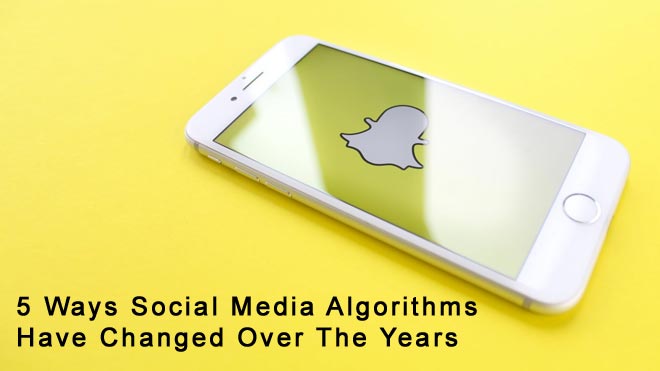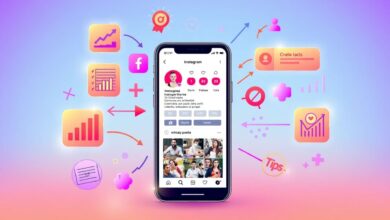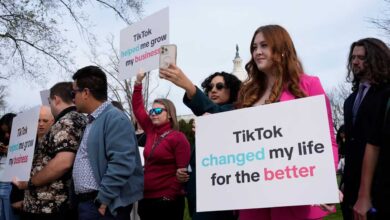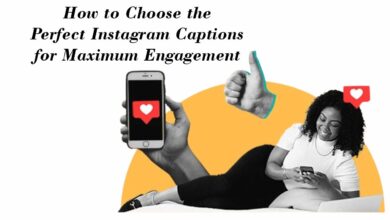Social media platforms have changed a great deal in a short space of time. For marketers, influencers, and social media professionals even the smallest change can have a dramatic impact on their business.

Changes come thick and fast, so much so that social media sometimes seems to be in an endless state of flux, forcing its users to adapt and learn on the job.
Although minor changes occur all the time, it’s possible to identify clear trends from the early days of social media to now.
1, The death of the chronological feed
This is perhaps the most profound change. It applies especially (but not solely) to Instagram. When Instagram launched in 2010 it came with one of the simplest social media algorithms of all time.
The system was barely an algorithm at all. Feeds simply displayed content in the order it was posted. Scrolling further down would reveal older posts while staying at the top would show the freshest images.
All that changed in 2016 when Instagram introduced a new algorithm, bringing it in line with other social media networks like Facebook.
Rather than showing content in order, the algorithm employed machine learning to ‘guess’ what type of content users would like based on factors including previous interactions, who they follow, and whether they’d liked similar content in the past. For better or worse the chronological feed was gone, and algorithmic selection was in.
Since 2016 social media algorithms have been on all platforms and without exception, become incredibly advanced. Nowadays it seems almost inconceivable to imagine content simply displayed in chronological order.
An algorithm will crunch vast amounts of data to show users content that it thinks they’ll like and will keep them on the site for longer. This is a trend that’s certain to continue. As algorithms advance still further, content recommendations will become laser-focused.
The Instagram chronological feed was popular, and many users feel that they don’t see content from all the accounts that they follow. There always seems to be a rumbling campaign to bring the chronological feedback but after five years it doesn’t look likely.
Users might have to make do with something like a “latest post” option, but whatever form future feeds take, one thing remains certain. It’s becoming harder and harder to get your content seen, which brings us to our next point.
2, The slow decline in organic reach
2014 was a bad year for Facebook marketers. Previously, businesses of all shapes and sizes could reach customers via Facebook’s ‘pages.’ Many recall fondly a period that was almost a free buffet, with organic reach high and little to compel businesses to pay for advertising. All of that changed when Facebook introduced sweeping changes to how its algorithm curates content in 2014.
Some reported seeing their reach nosedive almost overnight. Posts that were one day getting thousands of likes and hundreds of comments were suddenly plunged into near invisibility.
Facebook passed this off as an attempt to make the newsfeed more personal by prioritizing content from families and friends. True or not, many users reported seeing more ads and promotional posts around this time, a trend that continues.
After chronological feeds, organic reach is easily the biggest victim of changing social media algorithms. It’s continued to decline across the board, on Facebook-owned Instagram, on Twitter, and even on platforms like the microblogging site Tumblr. Social media has become an advertiser’s game.
Tech giants have realized the value of data and how much advertisers are willing to pay for it. In such a climate, it’s natural that organic reach has and will continue to decline. These social media platforms don’t want to give away their reach for free.
That’s why statistics are important. With organic reach all but dead, marketers must turn to paid advertising if they want to make an impact. That requires data analysis on a grand scale, including the ages, locations, hobbies, and interests of the intended audience.
All of those stats are freely available on Facebook and Instagram. With organic reach dying and likely to flatline at some point shortly, marketers will need all the statistical help they can get.
3, Advertising is king
Social media was always fertile ground for advertising, but nobody could have guessed to what extent. To put this into perspective, Facebook’s advertising revenue has risen year on year, and in 2020 roughly 97.9% of its global revenue was derived from advertising.
That’s staggering and nearly unbelievable. Other social media platforms might not generate quite as much, but they are all moving towards a similar business model.
Advertising on social media takes many forms. When we think of adverts, we usually imagine sponsored posts or videos appearing on our feeds, but an advert might be as simple as an influencer promoting a product or an affiliate posting reviews.
Paradoxically, just as social media platforms have become awash with adverts, it’s getting harder for advertisers actually to reach customers. The tightening algorithms and restrictions on organic reach have pushed up the price of marketing campaigns and forced businesses to pay out in ways that would have been unthinkable just a few years ago.
Read Also: Influencer Marketing explains: Follow the rules of the game
Sponsored posts on Instagram, Facebook, Twitter, and Tumblr are too lucrative for tech giants ever to abandon them. Paying for reach is not just the new norm but big business. We might even consider it the sole business of social media platforms moving forward.
Quite simply, over the next few years, you’re going to see a lot more adverts on your social media newsfeed. As algorithmic learning advances and social networks continue to harvest data (despite recent troubles with Apple), those adverts are only going to get more relevant, too.
Read also: How to Get More Twitter followers as a brand
4, Disposable’ content
Social media is competitive. We’ve seen this time and time again. Facebook snapped up competitor Instagram, and the various platforms always seem locked in a mad scramble for relevancy. Snapchat is a good example. When it made its debut in the social media field in 2011 and started to grow rapidly in 2013, it became a threat to other platforms, especially Facebook and Instagram.
This threat was so great that Mark Zuckerberg even attempted to buy Snapchat but to no avail. Facebook began to compete. Snapchat is a time-limited medium. Its content expires in a matter of seconds, so Instagram and Facebook introduced time-limited stories.
These last for 24 hours, come with filters, and effects, and then disappear. Stories were a direct response to the popularity of Snapchat and the increasing trend towards quickfire, more disposable content.
This is clear everywhere. Twitter introduced moments, Instagram brought in IGTV, and Facebook stories are now an integral part of the platform. All of these prioritize short, sharp bursts of content that make an immediate impact and then vanish. With TikTok the new kid on the block, content is likely to become even shorter, and even more disposable.
Read Also: Unlock Snapchat’s Marketing Potential for Businesses
Short-form videos and stories are known to boost an account’s standing with the Instagram algorithm. Videos on the feed are capped at 60 seconds and it’s a widely accepted fact that shorter videos perform better and generate more engagement.
Using Instagram Live for your Business is also good for getting an audience’s attention. This isn’t necessarily a bad thing. The transient nature of a newsfeed seems almost designed for quick hits, just don’t expect long-form content to be making a return any time soon. Social media will become more consumable than ever in the coming years.
5, Customized recommendations
Social media platforms have always had sections where users discover other accounts. Tumblr had its spotlight, for example. With algorithms able to learn the type of content that individual users favor, though, these recommendations have increasingly come to dominate social media.
This is more obvious than ever, especially on Instagram. Users see more recommended content than posts from accounts that they follow. TikTok leads the field in this area. Its two feeds ‘following’ and ‘for you’ are completely separate. One shows content that you’ve sought out, the other makes algorithmic recommendations that you might enjoy.
Intriguingly, TikTok defaults to the ‘for you’ll feed when opened, rather than taking you directly to content from accounts that you follow. The dual feed approach has a lot in common with Instagram’s ‘Search and Explore,’ which is populated entirely with recommended posts from accounts that you aren’t following.
Just how far this will go remains in doubt. While recommendations may always remain an optional sideshow, Instagram, in particular, appears to be putting more and more emphasis on content from accounts you don’t follow. ‘Search and Explore’ already feels like an alternative newsfeed. Scroll down far enough on the actual newsfeed and you’ll find recommendations from other accounts.
Long gone are the days of organic reach and chronological feeds. It’s no great stretch of the imagination for these recommendations to become the bulk of the social media experience, and who you follow is increasingly irrelevant. As algorithms become even more advanced, they’ll be able not just to sort the content that you see, but actively control what you discover.
Reading Tip:
To select the best SMM panel for Instagram followers, consider factors like follower authenticity, positive reviews, reasonable pricing, prompt delivery, reliable customer support, and secure methods. Additionally, seek recommendations from trusted sources who have successfully used SMM panels for Instagram growth.







